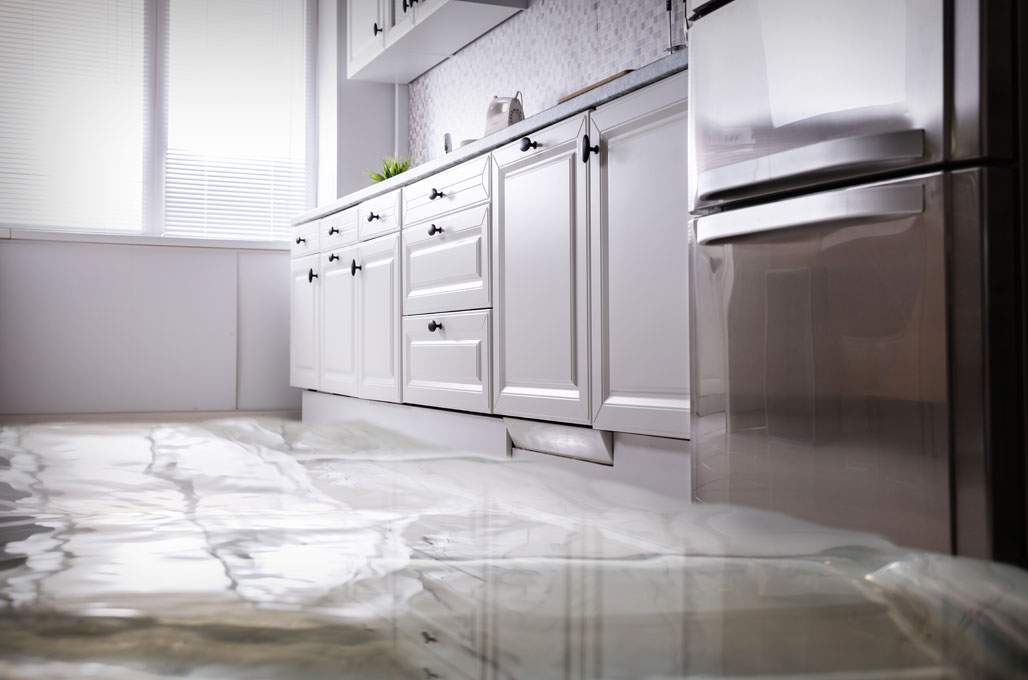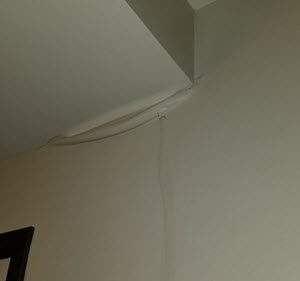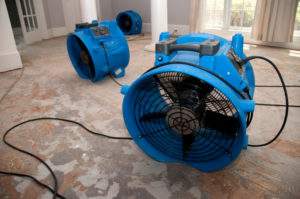How to fix water damage to your ceiling

Water damage to the ceiling is a problem you don’t want to put off or ignore. Whether the water is coming from an outdoor or indoor source, letting that water continue to pool could lead to mold growth and structural instability, potentially culminating in a ceiling collapse.
Signs of water damage to your ceiling include:
- Slightly discolored spots — usually copper, yellow, or brown
- Peeling, cracking, or bubbling wall surfaces
- Discolored growths
- Odors indicative of mold or mildew
- Stains on ceiling
- Sagging ceiling
- Bulging drywall
So, what steps do you need to take to repair the water damage to your ceiling?
Find and Fix The Source

If you’re dealing with water coming in from outside, you should start by checking both your roof and gutters, and seeing whether repairs are needed, or if potentially your gutters are just clogged and overflowing. Bring in a qualified roofer or repair company to patch up or replace your roof, as needed.
If the room above the ceiling water damage is a bathroom, you may be dealing with poor waterproofing leading to condensation seeping down through the floor and into the ceiling. When it comes to internal water sources, you may also be dealing with a leaky or burst pipe, or a leaky appliance, such as a refrigerator. Whatever the source, shut it down immediately, and repair it appropriately. If you are going to clean up the water damage yourself, this video will help.
Repair the Damage
Now that you’ve dealt with the source, it’s time to deal with the ceiling water damage.
Drain Pooled Water
If your ceiling is bulging, there is likely water pooling, which should be drained. You can do this by placing a bucket below the bulge and (carefully) piercing the drywall with a nail, knife, or screwdriver. Be very cautious, and don’t stand directly below the hole you’re making. Also be sure to wear protective goggles while performing this step.
Cut Away Damaged Materials
Next, you will need to remove damaged and discolored materials, anything containing mold or mildew, and damaged drywall. This step can be dangerous, and you may want to bring in a professional at this point if you’re not familiar with the wires that lie beyond your ceiling’s surface. It is also tricky cutting away drywall without accidentally cutting the wood joist, so you’ll need to exercise caution here, to only cut away non-structural parts of your ceiling.
Dry Out the Ceiling

The next step is to completely dry everything out. You’ll want to use a combination of towels, wet-dry vacuums, and fans to work towards fully drying out the ceiling. Use industrial drying fans to dry the areas above and below the damage.
After you feel sure everything is completely dry, wait two days and check to see whether there is any new dripping or other signs of damage. If there is new damage, then repeat the first step to find and repair the source. If you continue to practice DIY methods and they aren’t working, a water remediation professional could be a great deal of help, figuring out what’s going on and properly repairing it.
You will also need to see whether drying the drywall out was effective. One good test to see whether drywall is too saturated with water to be repaired is to poke it in various spots with your finger. If the drywall feels very solid, you are probably okay, but if it is soft or spongy, then that drywall will need to be replaced.
Repair the Ceiling
Once you’re sure you’re no longer dealing with a water issue, it’s time to repair the ceiling itself. Scrape away any loose portions of ceiling, as well as anything that is flaking or chipping. Use sandpaper to smooth over the transition from damaged and undamaged areas.
Any large holes in the ceiling will need to be filled in with new drywall or plaster, while small holes can be filled in using joint compound.
After the repair to the actual substance of the ceiling is complete, use a coat of primer over any areas that were stained, and then paint the entire ceiling.
Dealing with ceiling water damage is very important, and can be a big job. You need to be equipped to safely work on materials above your head, and exercise caution with wires and structurally important areas. Additionally, any lingering water is an ideal breeding ground for mold, which you want to avoid at all costs.
At Abbotts Cleanup and Restoration, we are well equipped to handle any and all parts of this process, from water remediation to mold remediation, and more. Contact us today for a free estimate, and find out how we can help.

